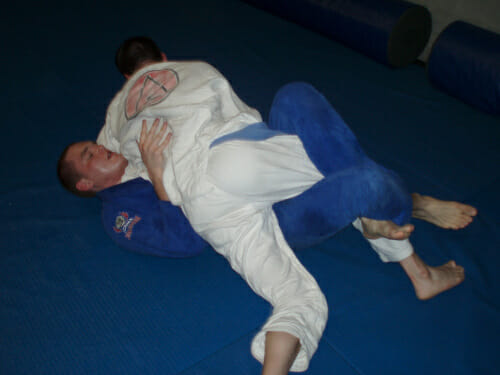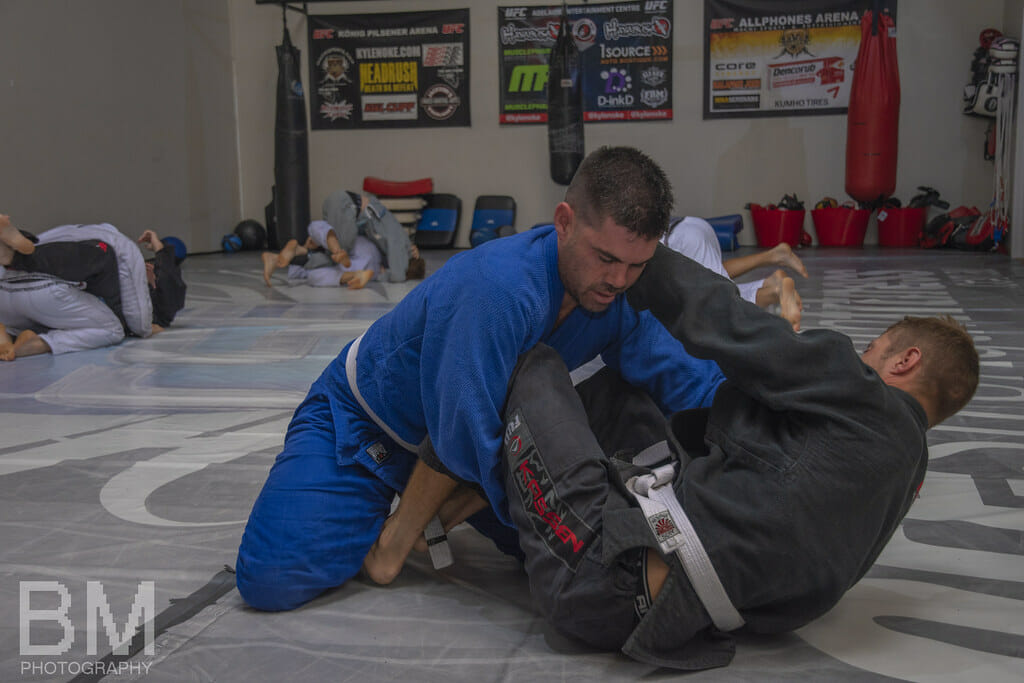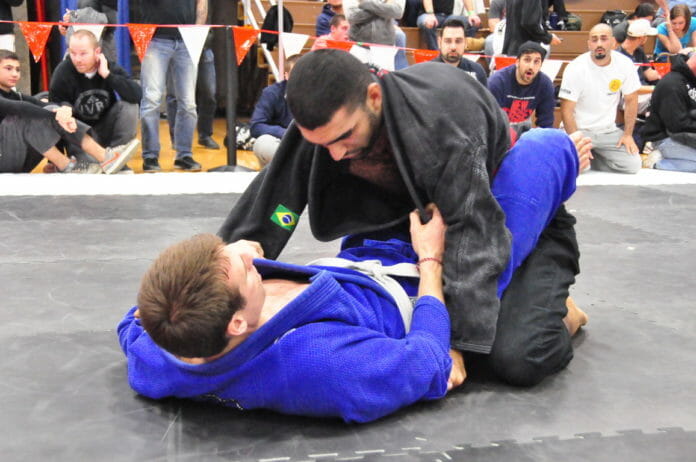If you had to name the number one thing that separates Brazilian Jiu-Jitsu from other grappling arts, the depth of the basic BJJ guard positions should make the top of your list. Many of the top submissions and positions in grappling are not unique to BJJ. However, the ability to threaten your opponent with massive arsenals of sweeps and submissions while your back is against the ground separates the Jiu-jitsu artist from skilled grapplers from other disciplines. The power of a well-developed guard system cannot be understated when it comes to successful grappling.
In modern sport BJJ, you will see nearly endless varieties of fancy guard positions. Nevertheless, the basic guard positions you will begin learning early-on in BJJ form the foundation of every advanced guard system. Furthermore, mastering a few varieties of basic BJJ guards allows you to transition between numerous sweeps and submissions. Whether you plan to sweep and get top position or enter a slick leg-lock entanglement, the following guard positions are a must-have in your BJJJ arsenal.
BJJ Closed-Guard: The Foundation
Closed guard is the most iconic guard position and is generally the first guard you will learn in a BJJ fundamentals class. Closed guard occurs when you are on your back with your legs wrapped around your opponent’s torso with your feet crossed behind their spine. It is a very instinctive position for most people learning to play guard and is probably one of the most common positions you will see in beginner BJJ tournaments.
The advantages of the closed guard include the ability to apply the full power of your lower body to control posture. Additionally, your opponent must ‘break your guard’ before he or she can attempt any serious passing or submission threats. Furthermore, classic submissions such as the triangle and armbar from guard are readily set-up from the closed guard.
The closed guard has numerous applications beyond BJJ competition. In self-defense, closed guard allows a means of distance control for standing up and escaping the encounter in a worst-case scenario. While it is not the best position in an MMA fight, closed guard allows you to off-base your opponent for some ability to stop a ground-and-pound flurry. If the bottom fighter is a skilled grappler, closed guard offers many fight-ending submissions in MMA.
To develop an offensive closed guard, you must understand how to use your legs and core alongside your arms to set up sweeps and submissions. Many beginners focus too much on pulling the opponent’s head with their arms and neglect the power in their legs and hips. Additionally, developing the proper timing for opening the guard for transitions to attacks takes dedication and practice.
Nevertheless, learning a few basic closed guard attacks such as triangles, hip bump sweeps, and armbars open many additional attack options that will expand your BJJ guard game throughout your time grappling.
Looking for sharp submissions from closed guard? Check out Henry Akins Closed Guard Attacks!
Half Guard: BJJ’s Undervalued Offensive Position

Traditionally considered the halfway point between full guard and getting passed, the BJJ half guard has come into its own as a bottom position offering many offensive attack options. In fact, half guard is more of a category of guards as opposed to a single position. Each half guard position involves controlling one of your opponent’s legs between both of your legs from the bottom position. The positions include traditional half guard, sitting half guard, and the lockdown.
A skilled half guard player has several great attacks. These include the traditional kimura series of attacks, dogfight to old-school sweep variations, deep-half guard entries, and ‘plan B’ sweep variations. Always be wary if you are able to easily pass into half guard, as many skilled half guard players prefer to set up their attacks from one of the BJJ half guard variations.
When you are on the bottom playing half guard, you do have to watch out for a few submissions including the kimura and D’arce choke. You must also have a good understanding of obtaining and maintaining solid underhook control.
Whether you want to be an offensive half guard player or be able to pass your opponent’s half guard with ease, you must develop an understanding of the half guard and its variations.
BJJ Butterfly Guard: Pesky Hooks Galore
Last but not least on our list of the three basic BJJ guards to learn as a beginner is the butterfly guard. Butterfly guard is a variant of open guard where you leverage your shins and flexed feet against your opponent’s thighs. In combination with using your arms to control posture and pummel, properly activated butterfly hooks provide an immense amount of leverage to off base and sweep your opponent. Even a single butterfly hook, when utilized properly, allows you to elevate your opponent’s leg and come to a top position.

The butterfly guard can be employed against both kneeling and standing opponents. For the most part, you should use butterfly guard as a platform for sweeps and back takes. Nevertheless, you can set up submissions such as the kimura and guillotine choke from the butterfly guard.
Additionally, as you become more advanced, the butterfly guard offers a number of entries into leg lock positions. These include basic entries into ashi garame/single-leg X guard, as well as entries into positions such as the honey hole, 50/50, and double-outside ashi.
Butterfly guard is also a great basic ‘reset’ BJJ guard when you are about to get passed. If you become proficient with the butterfly hooks, you can use any little space your opponent gives to worm a hook in and get back to a full butterfly guard. If you can frustrate your opponent in this way, the sweeps will quickly open up as their passing gets more and more flustered.
Which BJJ Guard Should I Learn First?
Now that we’ve covered three of the most basic guards in BJJ, you’re probably wondering which you should be learning first. If you are training at a BJJ school, this boils down to your instructor’s curriculum. However, the BJJ journey is not linear, and you will likely begin piecing together each guard in conjunction with the others as you develop your grappling.
Realistically, any of these guards are great to learn as a beginner, and you will continue to develop each along your journey towards the next belt rank. If you have an interest in any particular guard that your instructor hasn’t covered, you can always check out an instructional covering the closed guard, half guard, or butterfly guard.





